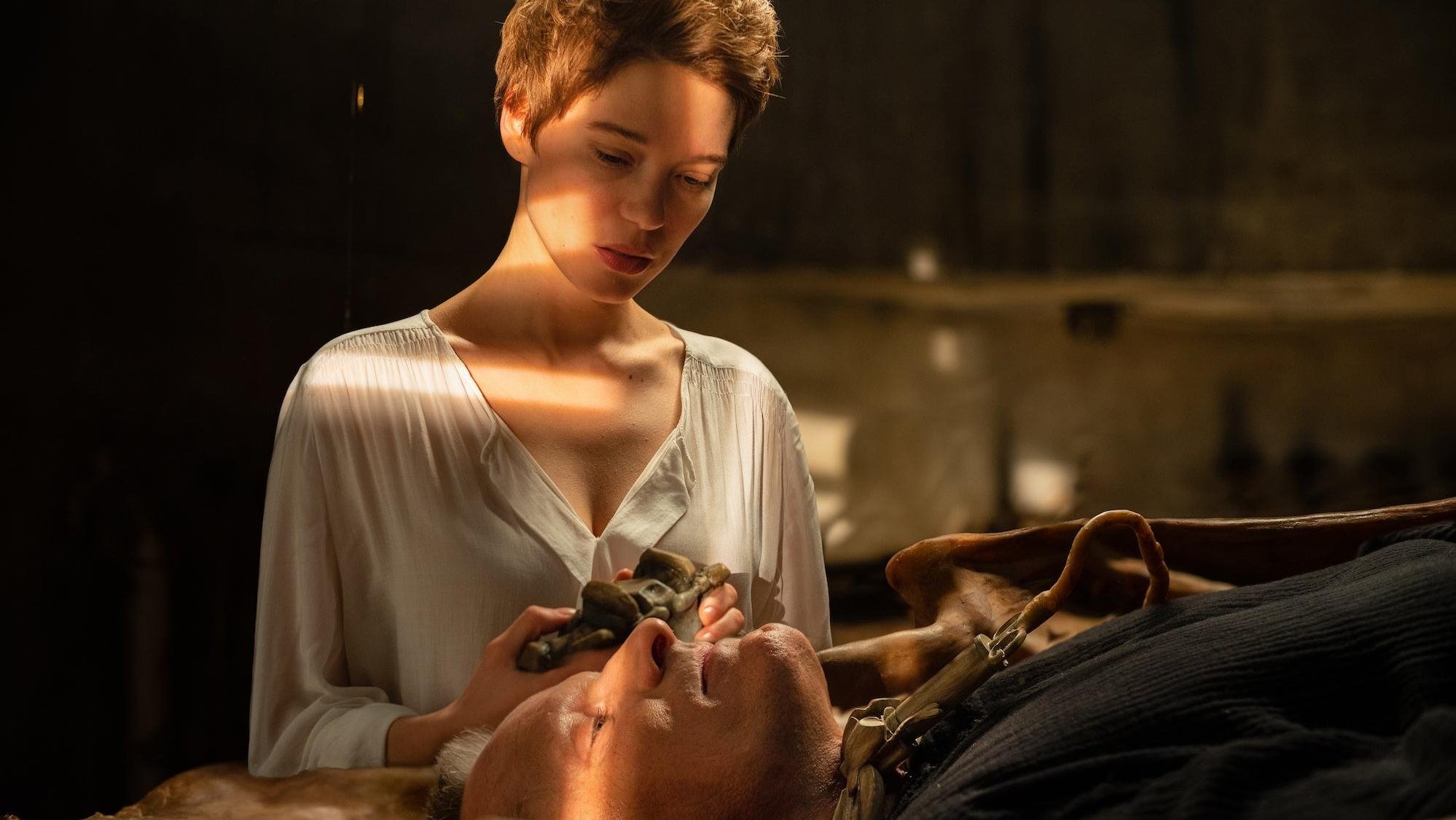Crimes Of The Future revisits ideas and iconography from David Cronenberg's past
The filmmaker enlists Viggo Mortensen, Lea Seydoux, and Kristen Stewart for a dreamlike meditation on sex, art, politics, and body horror

David Cronenberg has never been entirely kidding. Even with absurd company names like “The Somafree Institute of Psychoplasmics” (as seen in The Brood) or preposterous lines of dialogue like “Drink deep, or taste not, the plasma spring!” (bellowed by Jeff Goldblum in The Fly), the Canadian director’s love affair with scientific gobbledygook and body-driven weirdness often inspires a chuckle, followed by a “Wait, is he serious?” He’s never been more serious than with his latest, Crimes Of The Future.
This slow-paced, action-light film, which debuted at Cannes, is an unmoored, dreamlike meditation on the filmmaker’s recurrent topics: transgressive sex, art and politics, nightmarish visions of organic matter. It’s unclear when it takes place. It’s unclear where it takes place (though some building signs are in Greek for some reason). And it’s unclear just how much we’re supposed to take strictly as metaphor. Again, the question arises—is he serious?
Cronenberg’s A History Of Violence and Eastern Promises star Viggo Mortensen plays Saul Tenser, in eternal discomfort because his body is rebelling against him. Within him grow unnatural organs, which his partner Caprice (Léa Seydoux) removes during live performance art ceremonies. They live in an underground bunker, or maybe it’s a dried-out aqueduct, and Saul sleeps in what looks like a giant upside-down beetle. He eats in a contraption made from bones that jostles him around, supposedly to help him digest. Whenever he goes out, he wears a cloak like he’s about to sing backup for Enigma. Nothing about it makes a lick of sense, but there’s a surreal flow to it all that, in the moment, carries you from scene to scene.
To spell out specific moments of the film’s very minimal plot would be pointless. You just kinda have to experience it yourself, and hope you connect with the vibe. Other characters that waft through include Wippet (Don McKellar, looking a bit like Canadian enfant terrible Jordan Peterson) and Timlin (Kristen Stewart, affecting an irritatingly hoarse speaking manner) who both work for the “National Organ Registry.” In this Future, where most humans have ceased experiencing pain, Tenser is not just an anomaly, but a celebrity for those anticipating the next step in human evolution.
Which leads to Scott Speedman’s character, part of a cell of activists who have transformed themselves such that they now only eat plastic waste. Their quasi-eco terrorist plans are vague (less vague, even, than similar rebellion-through-metamorphosis bands in Cronenberg’s Scanners and Videodrome) and involve making poison chocolate bars. Also in the mix are two daffy gals who fix complex autopsy machines (powered by, um, a robotic tortoise shell?) who are eager to get naked, possibly just to make sure no one in the audience nods off.
This surely reads as quite nutty and, indeed, there is a lot of far-out material up there on the screen. (Mortensen is clearing his throat and gurgling in gastric distress through the entire picture, one should point out.) The biggest shock, though, is that when internal organs aren’t slithering around in close up, the rest of the movie is just a concrete wall of very slow dialogue. Weird dialogue, sure, but slow, and in dark, ugly rooms, too.
A little research will show that in 1970 Cronenberg made a one-hour movie called Crimes Of The Future that bears some similarities. It was shot with non-synchronous sound and is even more baffling to follow, plot-wise. (A tangent in the film mentions rogue, never-before-seen organs growing in some people.) The older film, however, is shot with bright primary colors against some of Toronto’s more photogenic modernist and brutalist buildings. From a strictly visual perspective, it’s a little more alive, frankly. In the new film there’s a subtle in-joke about sexy titles securing financing (concerning a governmental bureau investigating “New Vice”) which makes for as good a reason as any for the re-use of the title.
The point of the entire exercise is, at least on some level, an examination of the artistic process. Saul Tenser gestates a new and never before seen organ, causing him great stress and pain. Anyone who has had to file a term paper can relate, let alone a world-renowned filmmaker.
There’s a famous quote about writing—“just open up a vein and bleed”—but Crimes Of The Future takes this way beyond literally. It’s a little unclear, though, if it has anything more substantial to say than that.